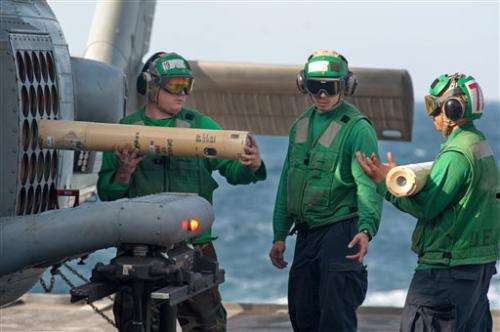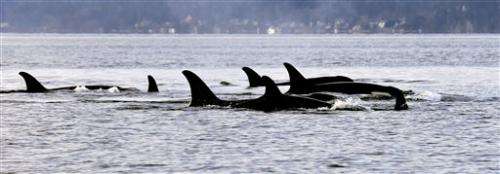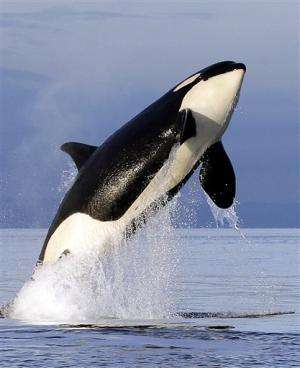Navy wants to increase use of sonar-emitting buoys

The U.S. Navy is seeking permits to expand sonar and other training exercises off the Pacific Coast, a proposal raising concerns from animal advocates who say that more sonar-emitting buoys would harm whales and other creatures that live in the water.
The Navy wants to deploy up to 720 sonobuoys at least 12 nautical miles off the coasts of Washington, Oregon and Northern California. The devices, about 3 feet long and 6 inches in diameter, send out sonar signals underwater so air crews can train to detect submarines.
"It sounds drastic in numbers, but it's really not drastic in its impact," said John Mosher, Northwest environmental manager for the U.S. Pacific Fleet. "Anti-submarine warfare is a critical mission for the U.S. Navy."
The Navy's training range is home to endangered whales such as orcas, humpback and blue, as well as seals, sea lions and dolphins.
Critics say the noise from sonar can harass and kill whales and other marine life. They worry the Navy is expanding training exercises without also increasing efforts to reduce the impacts.
Steve Mashuda, a lawyer with the public-interest law firm Earthjustice, said they're not asking the Navy to stop training in the area.
"But it's a big ocean out there. You don't need to have all of those square miles of training available 24 hours a day, 7 days a week," said Mashuda, whose group previously sued over permits issued to the Navy.
The Navy needs authorization from the National Oceanic and Atmospheric Administration under the Marine Mammal Protection Act, since explosive detonations, sonar and vessel strikes have the potential to disturb, injure or kill marine mammals. Its current five-year permit expires this year.

The Navy's preferred alternative proposes 30 bombing exercises a year, as well as increased air-to-surface missile exercises and anti-submarine tracking activities that use sonar. It is taking comments through Feb. 2 on its updated proposal.
Meanwhile, a separate Navy proposal to begin electronic warfare training in national forests in the state has also stirred opposition. People say they're worried about noise, public safety and other potential impacts.
The Navy wants to improve training for jets based at Naval Air Station Whidbey Island. They propose using mobile electronic emitters in Olympic, Colville and Okanogan-Wenatchee national forests so pilots could practice detecting those signals.
The Navy says no weapons are being used. Heavy-duty pickup trucks will be equipped with emitters that send electromagnetic signals into the sky that are similar to signals used by cordless phones and Bluetooth devices. The vehicles, which haven't been built yet, will be similar to a television news satellite truck.

"There's absolutely nothing to be afraid of. There's no safety issue for the public, wildlife or the environment," Mosher said.
The Navy needs special use permits from the U.S. Forest Service to use forest roads and pull-outs.
In Western Washington, a fixed-emitter is proposed for Pacific Beach while mobile trucks would use 15 sites in the Olympic National Forest and additional sites on state lands. The Navy is proposing eight other sites in north-central Washington in the Okanogan and Colville national forests.
Mosher said the plan would allow the Navy to train closer to home. Air crews now fly to Idaho for the training.
© 2015 The Associated Press. All rights reserved.


















